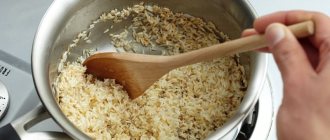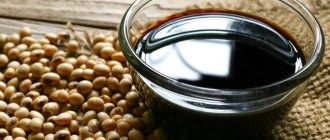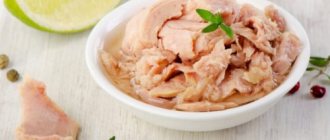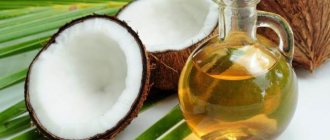How and where is olive oil made?
The product is produced in Mediterranean countries. Most are imported from Spain, Italy and Greece.
Green olives and black olives are the fruits of the olive tree in varying degrees of ripeness. Oil from unripe fruits - olives - is more tart. From ripe black olives, the yield of the finished product is greater and the taste is softer. The raw fruits are very bitter. They are pre-soaked using a special technology and then pressed. The resulting mass is stirred. Spinning is done using a centrifuge.
Which olive oil is better
Unrefined olive oil is obtained by directly pressing raw materials without the use of chemicals, at a temperature not exceeding +40 ° C. This is a product of the highest quality, is not subjected to a refining process and retains all the beneficial properties of olives. It has a pronounced taste and aroma.
Refined is produced by chemical purification and at high temperatures. Such a product is no longer so healthy, almost devoid of taste and smell. The only plus is the longer shelf life.
How to choose a quality product
In order not to harm your body, you should know how to recognize quality products:
- Storage container – preference should be given to the oil that is sold in glass or tin containers. It is important that the glass is darkened when storing in a bottle, otherwise the smell and color of the product may be spoiled;
- Appearance – Color can range from light golden to deep green, depending on the variety of olive. There should be no sediment at the bottom of the container;
- Taste – a fresh and high-quality Extra Virgin or Virgin product should be rich and bitter. If there is a metallic taste and rancidity, it is a fake;
- Acidity – for a high-quality, unrefined product it should be less than 0.8%;
- Packaging – there must be a label with detailed information (country of production and type of spin);
- Date of production - fresh product is the most useful. The shelf life should be less than 1.5 years.
You can check the quality of the purchased product using a simple experiment: pour a small amount of juice into a glass and place it in the refrigerator for 2 hours. If the raw materials are of high quality, you will see sediment at the bottom of the glass.
Beneficial properties of olive oil
The consumption of olive products is an integral part of the diet of residents of Mediterranean countries. This region has low rates of cardiovascular disease. The benefit lies in the content of phytosterols, which block “bad” cholesterol. This reduces the risk of atherosclerosis, heart attack and stroke.
The product has a bitter taste. Bitterness stimulates the production of bile, which is directly involved in the breakdown of fats. This has a beneficial effect on the activity of the liver, gall bladder and intestines, and helps improve digestion.
The benefits of olive oil for women's bodies
Contains the “beauty vitamin” (vit. E), which is also necessary for the normal functioning of the reproductive system. Helps normalize hormonal levels. Improves skin condition. Is a natural antioxidant.
Regular consumption benefits women's health and helps maintain beauty and youth.
Benefits of olive oil for men
Olive product is also beneficial for the male body. Facilitates liver function, which helps cope with alcohol intoxication. Protects blood vessels and has a beneficial effect on potency. Prevents the occurrence of cardiovascular pathologies. Improves the condition of the hair, which is important for age-related baldness.
Reviews
Antonina, 44 years old, Kerch
An elderly doctor once told me that it is very beneficial for the liver and the body in general to drink a mixture of 200 ml of fresh homemade tomato juice and 1 tbsp in the morning on an empty stomach for a week. natural cloudy olive oil. Then take a 10-day break and repeat everything again.
Michelle, 35 years old, Zelenodolsk
And in the mornings, my husband and I sometimes mix the juice of one lemon with 1 teaspoon of oil, pour it into a glass with slightly cooled boiled water and drink 100 g. I buy Greek extravirgin oil in a 1 liter tin. I like the oil, and about the mixture I can say that it just feels like more strength. Although, probably, we are not yet at the age to correctly assess the healing properties of this composition.
Pantera, 54 years old, Azov
I read once, I don’t remember exactly on which site, that for heartburn you need to take olive oil according to a certain scheme. I took the following course: 21 days - half a tablespoon in the morning and evening on an empty stomach, then a week break and again 21 days. Why did I endure it, because at first it was unpleasant for me to drink fatty oil, then I got used to it.
Marina, 29 years old, Beloretsk
Thanks for the advice and recommendations. I want to try to improve the condition of my eyelashes. I'm planning a vacation in the countryside with chickens and a vegetable garden. I’ll just take advantage of the time when I don’t have to wear makeup.
It is impossible to overestimate the benefits of olive oil for the human body, regardless of age and gender. In cold climates with short summers, olive trees do not grow, but the benefits of olive oil occupy an important place in cooking and the health of people in all areas of the earth.
Health to you and your loved ones! Natalya Belokopytova.
Can a child have olive oil?
Olive oil is also good for children. It can be included in baby food starting at one year of age or even a little earlier. Add to food drop by drop.
Warning! It is better to first consult with a pediatrician, especially in cases where the child has allergic reactions to food.
Used for external use for diaper rash and for massage. Before applying to the child's skin, the container with oil must be warmed in hot water or in your hands.
Contraindications and precautions
There are conditions in the body in which consuming olive oil can be harmful. Caution should be exercised in the following cases:
- cholelithiasis - oil increases the flow of bile, which can provoke an attack;
- diarrhea – aggravation of the condition is possible;
- pancreatitis – the risk of relapse increases;
- an allergic reaction, although rare, is possible;
- obesity - high calorie content of the product aggravates the condition.
To avoid unpleasant consequences, try not to exceed the daily intake of 2 tablespoons. And, of course, do not use an expired or spoiled product.
Olive oil during pregnancy
During pregnancy, olive oil can be consumed in moderation, used as a salad dressing, added to soups and main courses. This will help avoid intestinal problems and make it easier to work with. It will serve as a good prevention of constipation and will benefit blood vessels and the heart. The product has a beneficial effect on fetal development.
Breastfeeding mothers should also include olive oil in their daily diet to maintain their health and benefit the baby.
Olive oil is used for stretch marks during pregnancy. Helps maintain the structure of the skin.
Benefits for women's health
- Daily consumption of olive oil reduces breast density, thereby significantly reducing the risk of developing breast cancer.
- Olive oil helps a woman stay young and beautiful longer. The thing is that the product contains healthy fats, thanks to which the condition of the skin, hair and nails noticeably improves. Small wrinkles are smoothed out, and curls acquire a healthy shine.
Thanks to regular consumption of olive oil, the skin remains firm and elastic longer.
- Olive oil helps with excess weight. Include this product in your daily diet, two tablespoons will be enough. Olive oil promotes gradual weight loss and reduction of body fat, as it accelerates metabolism and dulls appetite.
- Supports a woman’s health during physical and emotional stress. In such a situation, olive oil is simply irreplaceable. It prevents the menstrual cycle from going astray even under heavy loads and severe stress.
- Everyone knows that when a woman does not consume enough fat, her body stops working normally. The first sign is menstrual irregularity. If this happens too often, then there is reason to think about your diet. Add two tablespoons of olive oil per day to your menu and very soon your menstrual cycle will normalize.
- Many women use olive oil in their personal care. They make masks for hair and face, add the product to creams, and so on. The product really helps the fair half of humanity preserve their external beauty longer.
If you regularly take care of your hair with olive oil, it will become healthy and beautiful.
- Olive oil has a good effect on a woman's reproductive function. In addition to restoring the menstrual cycle, the product fights infections, restores the microflora of internal organs, and helps with thrush. In the latter case, you can lubricate the vaginal opening (but not inside) with olive oil, since the product has antibacterial properties. In other situations, it is enough to consume a few tablespoons of the product daily.
The benefits of olive oil for weight loss
People who want to lose extra pounds may want to consider whether olive oil can be added to their diet. You can't completely stop eating fat. Vegetable fats benefit the body. They are necessary for normal metabolism.
Advice! It makes sense to reduce the consumption of animal fats and replace them with vegetable ones.
To lose weight, drink one tablespoon of olive oil on an empty stomach in the morning. This is done in order to start bowel function. Regular bowel movements help cleanse the body. Proper bowel function is a prerequisite for achieving a slim figure.
The benefits and harms of olive oil on an empty stomach
To ensure that the oil does not linger in the stomach and gets into the intestines faster, it must be taken on an empty stomach. The beneficial properties of the product appear when it is in the upper intestine. If consumed in excess, it can be harmful.
How to use olive oil in the morning
In the morning you can drink a tablespoon on an empty stomach or mixed with lemon juice.
In the morning you can prepare the following mixture:
- Pour 2 tbsp into a mug. l. Kholosasa (rose hip syrup).
- Add 1 raw yolk and the juice of half a lemon.
- Pour 1 tbsp into the mixture. l. unrefined olive oil.
- Add 50 ml of water and mix everything thoroughly.
The mixture is drunk in the morning on an empty stomach for 10 days in a row. The procedure helps cleanse and restore the liver. It is used to relieve alcohol, drug, and drug intoxication and improve overall well-being. If necessary, the course is repeated several times a year.
Treatment of cholelithiasis
The cause of gallstones is boiled food, which promotes the formation of oxalic acid salts. It is useful to combine boiled food with fresh herbs and salads.
Cleansing enema to dissolve sand in the gallbladder:
- Stir in 1/2 cup lemon juice and 1/2 cup olive oil.
- Drink two hours after dinner.
- Lie on your right side and place a heating pad under your liver.
- In the morning, repeat the enema treatment.
The procedure eliminates bile stagnation and removes sand.
Another recipe:
- Prepare 0.5 liters of olive oil and 0.5 liters of strained juice of fresh lemons.
- Wait at least 6 hours after your last meal.
- Drink 4 tbsp. oil, immediately wash down with 1 tbsp. lemon juice.
- Repeat every 15 minutes.
- When the oil runs out, drink all the remaining lemon juice.
Stones in the bile ducts:
- Take 1/2 tsp herbal product. half an hour before meals, gradually increase the single dose to half a glass.
Olive oil in cosmetology
Used for external use as a stand-alone product or together with other oils used in cosmetology. Back in ancient Greece, athletes used olive oil to lubricate their bodies. The oil softens and nourishes the skin well. Protects against the harmful effects of adverse weather factors. Olive oil is also used for tanning instead of sunscreen.
Advice! Olive is mixed with peach, apricot, etc. This mix enhances the healing and cosmetic effect.
For facial skin
Olive oil for facial skin is used as a base for cream or as a component of a cosmetic mask. Nourishes, protects, rejuvenates the skin. Can be mixed with lemon juice, raw yolks, cosmetic clay, and herbal powder.
This is an excellent alternative to expensive store-bought creams. A cosmetic product prepared at home from natural ingredients will bring even more benefits.
When preparing a mask with olive oil, you should consider your skin type. An oily, nourishing mask is well suited for dry or combination skin.
Recipe for a rejuvenating face mask:
- Take 50 ml of a quality olive product.
- Mix with honey (preferably acacia).
- Add resinous Altai mumiyo on the tip of a teaspoon (or a couple of tablets of pharmaceutical mumiyo).
- For oily skin, use additional lemon juice.
- Mix everything thoroughly and apply to the skin.
- Keep for 25 minutes.
- Rinse off with cool water.
Warning! Before applying to the skin, you must make sure that you are not allergic to the components of the mask.
For hair
Burdock oil is traditionally used to improve hair structure and growth. If you mix it with olive oil and add nettle, the effect will be stronger. Before rubbing the oil into the roots of your hair, you need to warm it up a little.
For eyelashes, beard and eyebrows
Use special hard brushes dipped in olive oil to massage your eyebrows and beard. More delicately lubricates eyelashes. This makes eyebrows and eyelashes thicker and shinier.
For hands and nails
Used as a protective and softening agent for hands against frost and heat. Used for cracking and dry skin. In combination with medicinal herbs, it has anti-inflammatory and antibacterial properties. The calcium contained in the oil helps strengthen the nail plate.
Recipe for anti-inflammatory hand product:
- Take 500 ml of olive product.
- Add the herb St. John's wort, chamomile, celandine, string, nettle.
- Leave for 3 weeks.
- Strain and pour into a green or dark glass container.
Use as needed. The resulting product has pronounced wound-healing, softening and anti-inflammatory properties.
FAQ
What is the difference between olive oil and sunflower oil?
Here, the differences begin with the raw materials that are used to obtain - for the first, the fruits of subtropical plants - olive trees - are used, - in the second, sunflower seeds growing in our country. Different raw materials determine the difference in taste, aroma, chemical composition and, accordingly, properties. Among the fatty acids in the second, when compared with the first, the content of linoleic - polyunsaturated fatty acid - vitamin E is high.
Which olive oil is best for salad?
This type of dish combines fresh ingredients and brings maximum benefits to the body due to the preservation of the chemical composition. For this reason, oil should be used unrefined, first pressed, with a minimum acidity level (not higher than 1%), preferably labeled “extra virgin”.
Can opened olive oil be stored?
After opening the package, the contents begin to come into contact with the environment and oxidize. Monounsaturated fatty acids, which predominate in the composition, are unstable compounds, so you should avoid direct light and temperatures above 25 degrees / C and below 12. If the specified parameters are observed, the mixture retains its beneficial properties for a long time, so store the opened bottle It is possible, but only in a closed form.
Can olive oil be stored in the refrigerator?
When asking this question, it is worth knowing that the product contains monounsaturated fatty acids, which up to 12 degrees/C have a liquid consistency, and above 25 degrees/C begin to collapse. This fact does not serve as a reason for storage at lower temperatures due to the fact that in such conditions the formation of sediment occurs.
The clear answer to the question is no, you can’t.
How to take olive oil for medicinal purposes?
Due to the low content of polyunsaturated fatty acids, vegetable fat has a cholesterol-lowering effect on the body and acts as a way to combat atherosclerosis and inflammatory processes in the body.
To reduce the symptoms of atherosclerosis, as well as for preventive purposes, it is recommended to take olive oil on an empty stomach. It is worth considering that you should not drink more than four teaspoons during the day - such an amount is safe for health and will not cause harm, and an increase can result in negative consequences in the form of impaired functioning of internal organs. After consuming this product for medicinal purposes, you can eat only after forty to forty-five minutes.
Why is olive oil bitter?
The chemical composition of this vegetable fat is distinguished by the presence of substances such as anthocyanins and flavonoids, which are powerful anti-cancer agents and at the same time impart a bitter taste. The product obtained by cold pressing retains all the taste and aroma characteristics of olives, as well as the benefits. To eliminate specific indicators, manufacturers use refining, which leads to the loss of valuable substances.
IMPORTANT. In some cases, strong bitterness may indicate a violation of quality, but then there should be sediment at the bottom of the bottle.
Phenols, which are present in the highest concentrations in early harvested green olives, can give a bitter note to the taste. At the same time, this class of compounds has a preservative effect, so the oil has a longer shelf life.
The clear answer to the question is due to the high concentration of the following groups of compounds:
- flavonoids;
- anthocyanins;
- phenols.
How many calories are in olive oil?
The energy value of one hundred grams of the first cold-pressed product is 884.0 kilocalories, which indicates the need to limit the amount consumed daily. If we consider the nutritional value, 99.8% comes from vegetable fats, which do not accumulate in moderate amounts, but an excess can cause excess weight gain or an eating disorder.
Use in cooking
Unrefined olive oil is actively used in healthy nutrition along with other vegetable fats. Most often used for dressing vegetable salads. It is not recommended to heat it above +180 °C. Added to prepared dishes immediately before consumption.
Is it possible to fry in olive oil?
Refined oil is used for frying. The production technology makes it more resistant to heat and oxidation.
Composition and general characteristics
Any vegetable fat is a liquid fat. The base is dominated by triglycerides of unsaturated acids, different in chemical structure in the chain of arrangement of double bonds (omega-3, omega-6, etc.). The composition and ratio depending on the type of oilseed plant can vary significantly. In each case, they determine nutritional characteristics. They contain vitamins, microelements, and biologically active substances that are of particular value and expand the possibilities of use.
Main components
UNSATURATED FATS
Chemical formula of fat. R - radicals
Triglycerol compounds, the radicals of which (R, R`, R«) are various carboxylic acids:
The chemical basis of “liquid gold”
- Oleic acid, (omega 9) ranging from 63 to 78%.
- Linoleic acid (omega 6) from 3 to 13%
- Arachidonic acid (omega 6) up to 0.8%
- Omega-3 fatty acids in total up to 1%
The most important is oleic acid, which is an omega-9 unsaturated fatty acid.
Oleic acid determines the uniqueness of the base since it is not found anywhere else in nature in such quantities.
The following biologically active substances are dissolved in the fatty base of triglycerides and are present in significant quantities:
- TOCOPHEROL (vitamin E)
- PHYLOQUINONE (Vitamin K)
- POLYPHENOLS
- SQUALENE
- AROMATIC GLYCOSIDES
- PHYTOSTEROLS
- OLEUROPEIN
- OLEOCANTHAL
- HYDROXYTYROSOL
- TYROZOL
- OLEAZINE
The listed substances are active antioxidants and have a positive effect on the metabolism of the entire human body.
The actions of rare compounds complement each other and have a mutual synergistic effect.
The combined effects of omega-9 acids, fat-soluble vitamins and highly active polyphenols are the main benefits that the Mediterranean diet has enjoyed for thousands of years.
The chemical composition together determines the unique properties and breadth of use in cooking, medicine, cosmetology, and soap making.











